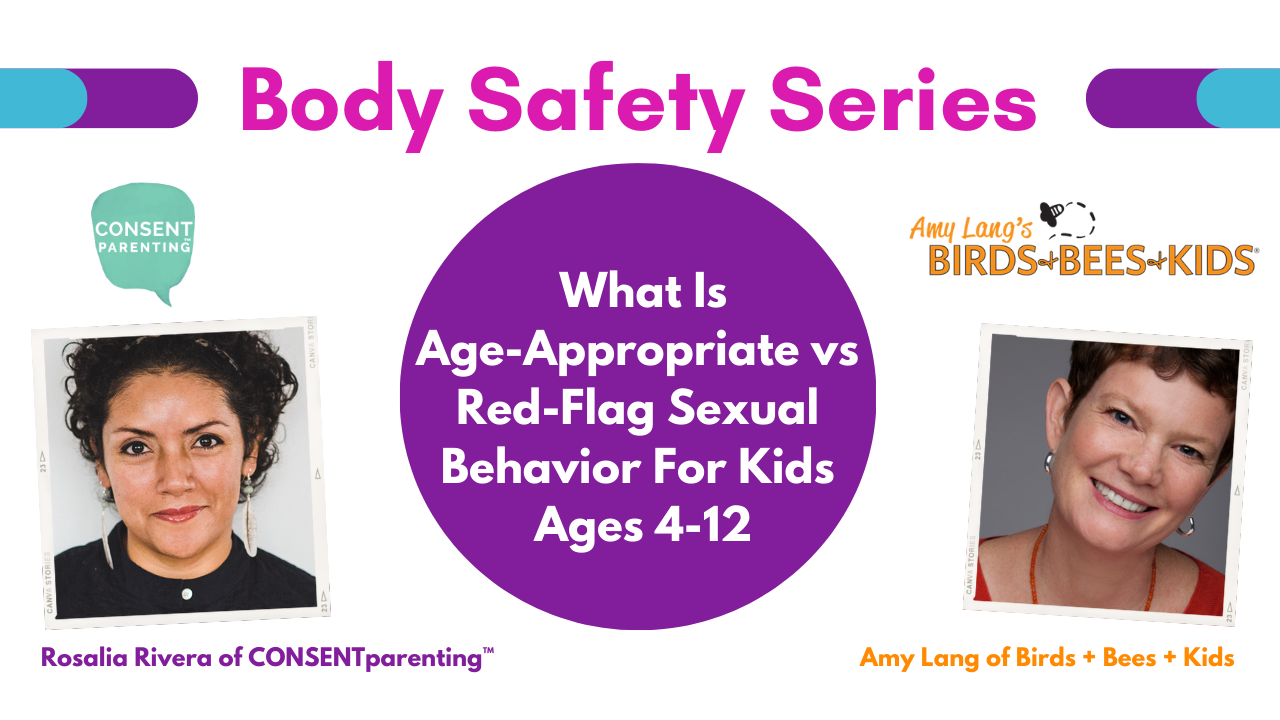What's Green, Yellow and Red Flag Behavior?

When we don't know what's appropriate and what's not, we may miss signs that point to deeper issues that need to be investigated, intervened and resolved.
That's why all safe adults should know what green, yellow and red flag behavior is.
Let's look at each of these scenarios below.
Try to guess which flag each falls under. There is a key below so you can check if you were right or need to better understand these behaviors.

#1- Green flag. This is a teachable moment to explain about self-exploration, what's appropriate and safe, and what's not.
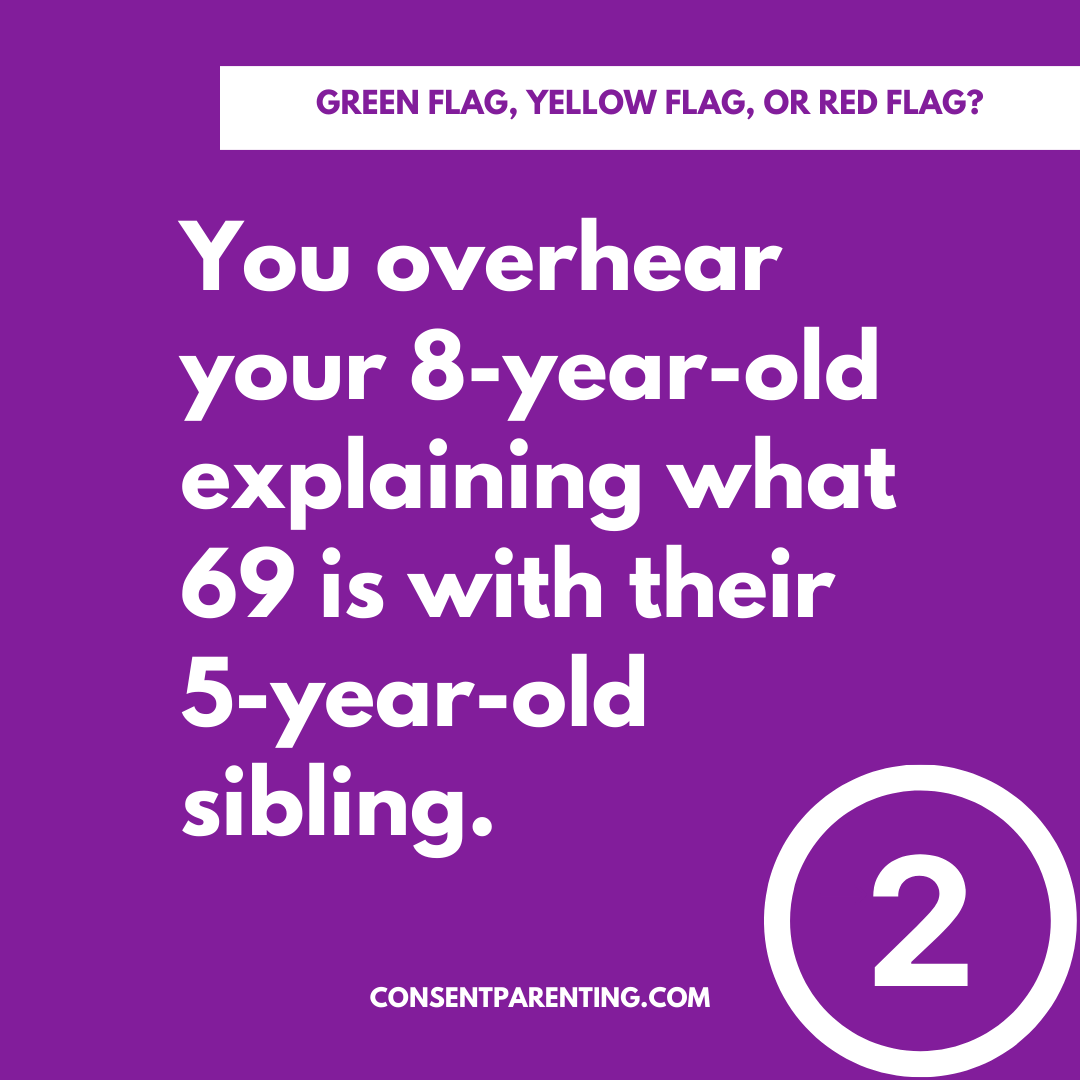
#2- Yellow/Red flag. This is not age appropriate knowledge, and even if what they're explaining is incorrect, they should not be explaining it to a younger sibling. This is worth finding out more about where the 8 year old learned this information.
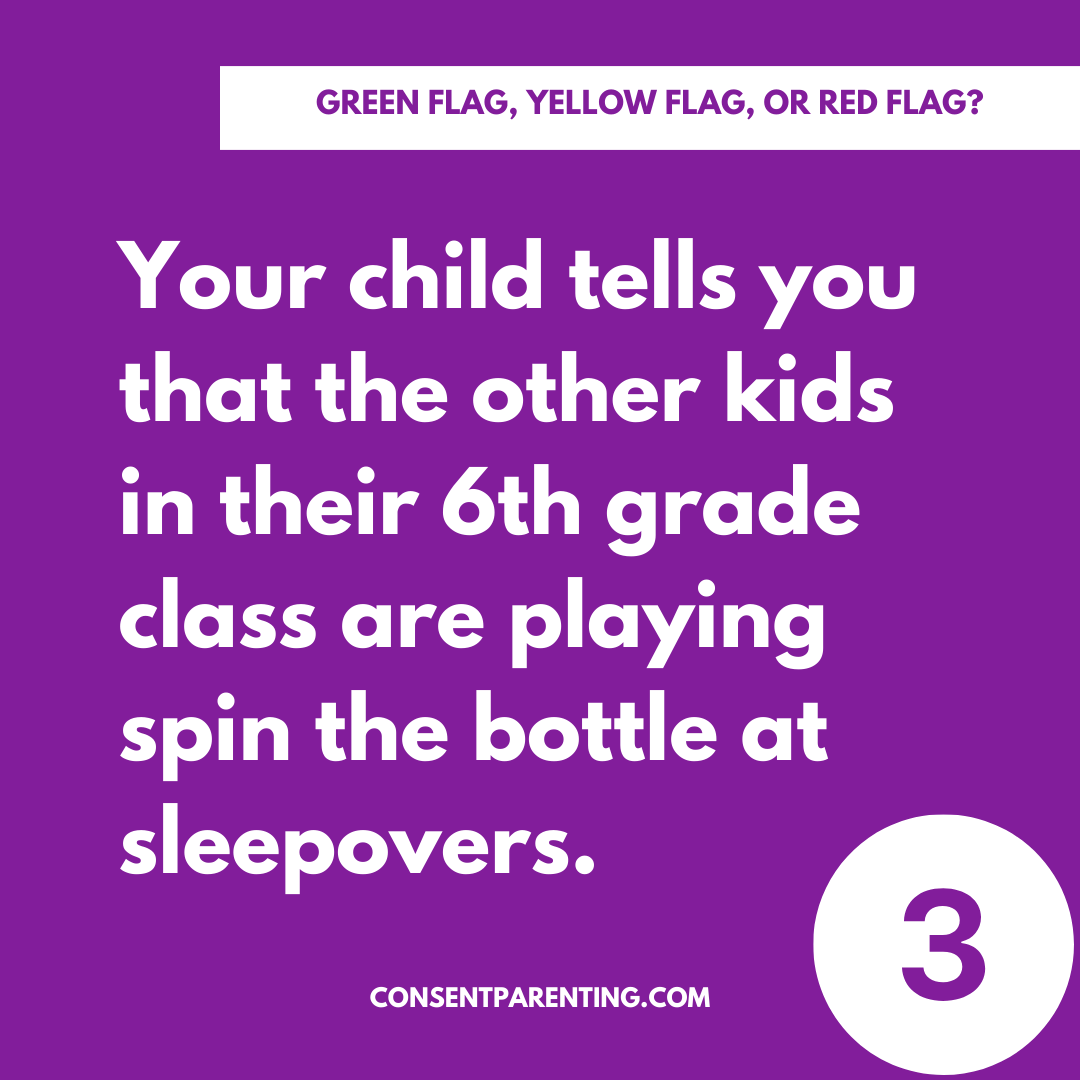
#3- Yellow/Red flag. 6th graders are at the cusp of puberty and are very curious about relationships and aspects of dating. But spin the bottle is not age appropriate for this age group and can lead to issues of boundary crossings/violations and sexual exploration they are not ready for with peers.
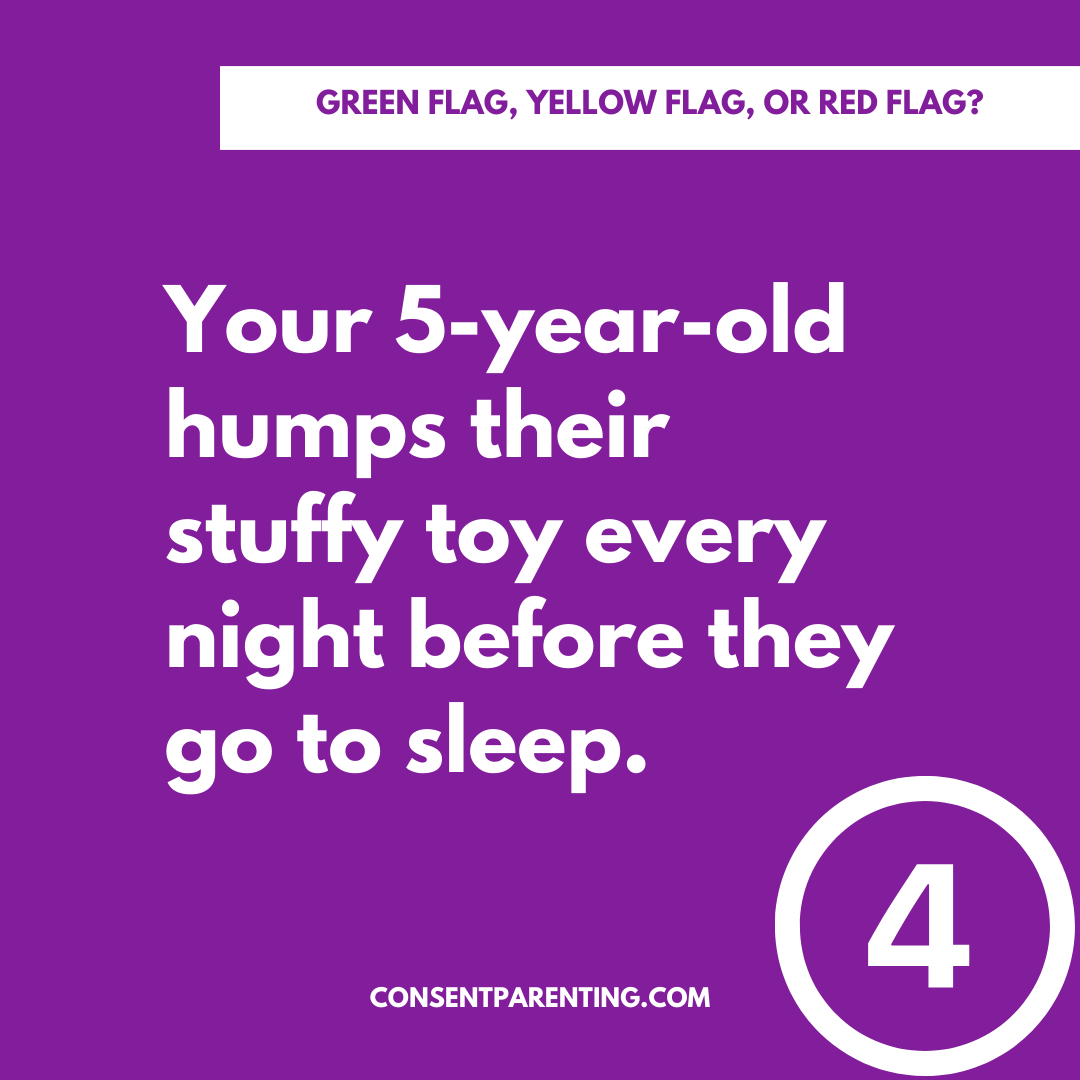
#4- Green flag. This is a teachable moment to explain self-exploration, what's appropriate and safe, and what's not. It's also important to understand if they're doing this behavior elsewhere or just in this scenario.

#5- Yellow/Red flag. This is not entirely uncommon for boys to focus on, but if the teacher has noted it, it should be something to bring up with your child to find out what the talks with his friends are about and delve deeper into any other areas of concern. Encourage your child to ask you any questions relating to their or anyone else's bodies instead of peers.
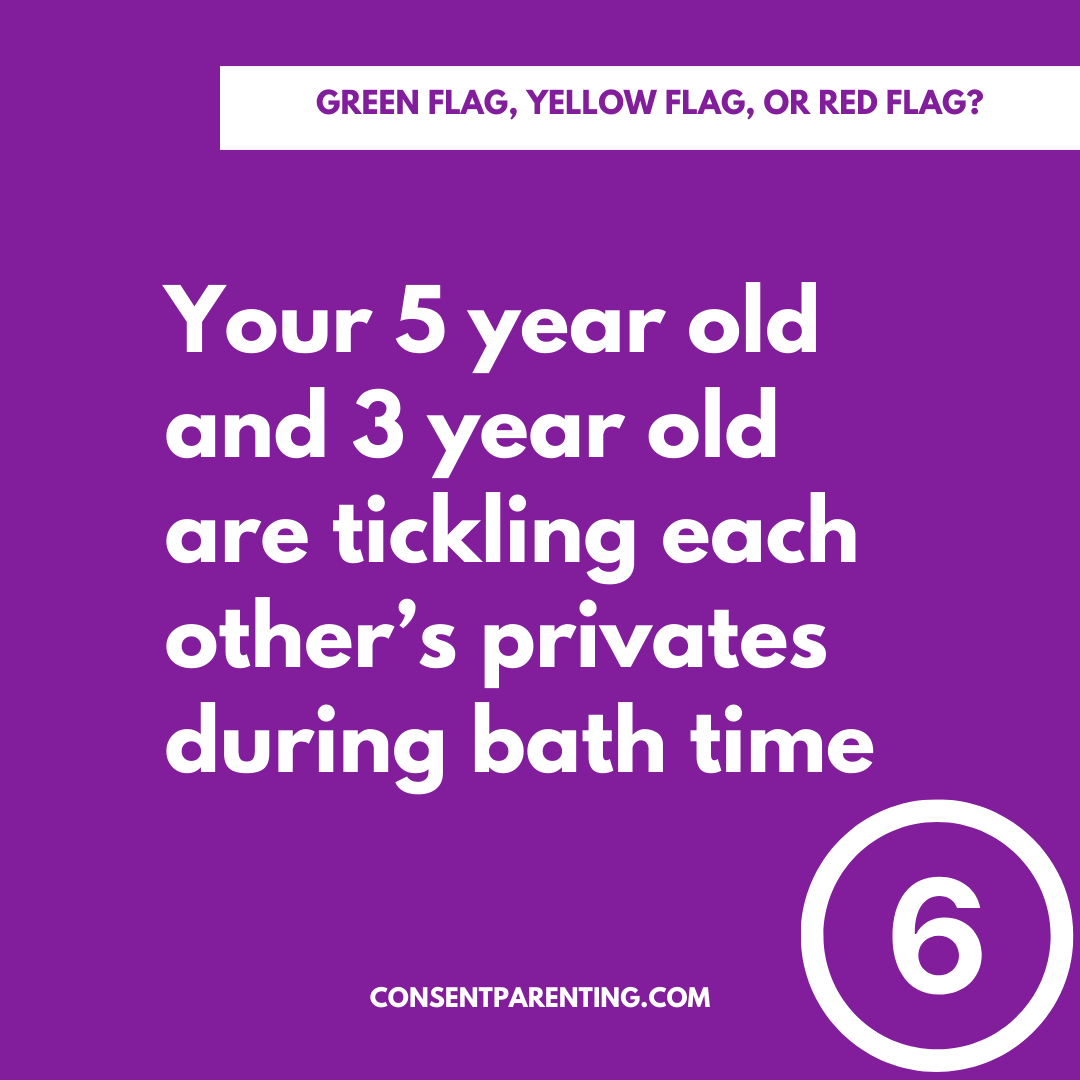
#6- Green/Yellow flag. This is a teachable moment to explain about body boundaries and private part safety, and what's appropriate and not appropriate with other people's bodies. Still, you should monitor that this behavior doesn't continue repeating and is a note to supervise bathtime for a while to make sure it's not escalating.

#7- Red flag. A 10-year-old should know not to ask another child, peer, or adult to show them their privates. This is definitely a red flag that should be intervened and investigated further.

#8- Yellow/Red flag. This is a teachable moment to explain about body boundaries and private part safety, and what's appropriate and not appropriate with other people's bodies. But if this is happening repeatedly after several times of redirection and education, it's worth looking further at other possible reasons for this behavior.
If you’re seeing actions that are excessive, secretive, compulsive, coercive, or degrading, this is your bright, flashing neon sign that says, “Immediate intervention needed!” This is your Action RED moment.
Then we have behaviors that might seem a bit outside the usual, maybe persistent or happening too frequently, or there's an age or developmental mismatch. This is your yellow flag to pay close attention. Gather your info, and assess what’s really going on to decide the best course of action.
And finally, let’s celebrate what’s healthy and normal! These behaviors are spontaneous, curious, light-hearted, and easily distracted, with kids or adolescents exploring in ways that are equal in age, size, and ability. This is your green flag opportunity to step in, provide positive feedback, and share valuable information.
Let’s turn these moments into teachable ones, filled with positivity and guidance!
Want more guidance on this topic?
Join me and sexual health educator veteran, Amy Lang for our upcoming class "Age Appropriate vs Red Flag behaviors" where we're diving in-depth on these important topics.
We'll not only be sharing about what is age-appropriate behavior for kids ages 4 to 12 years old, at each stage, but also:
- what's yellow flag versus red flag behavior in those different age groups,
- how to determine if yellow/red flag behavior is because of abuse or porn exposure or other factor,
- what to do if you spot yellow/red flag behavior at home,
- what to do if your child's school reports yellow/red flag behavior from your child or other children.
SIGN UP FOR THE CLASS HERE!
